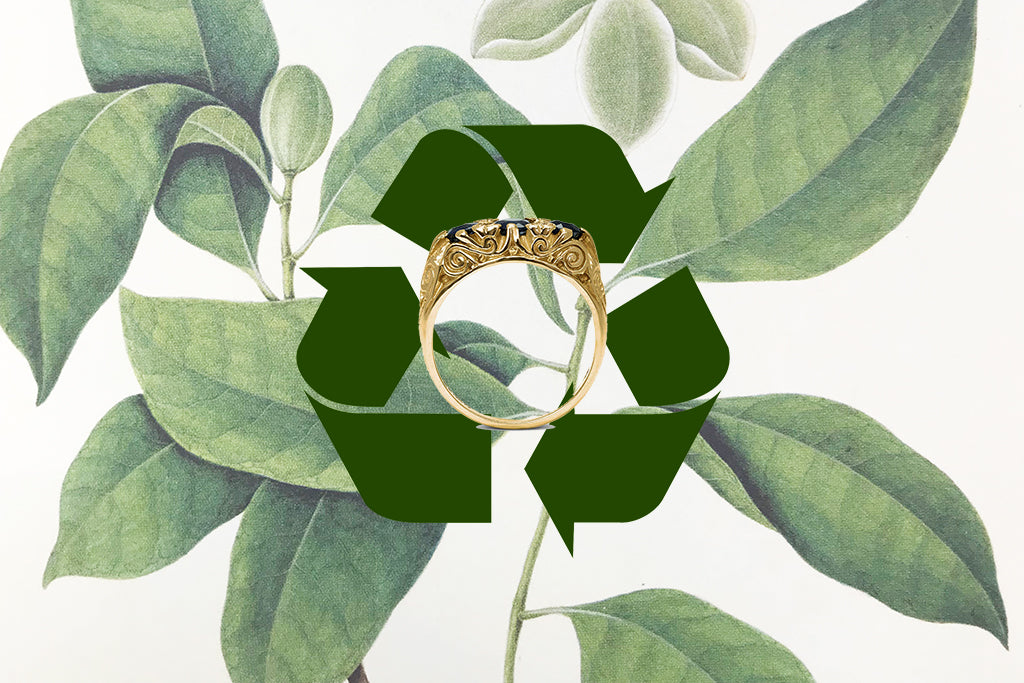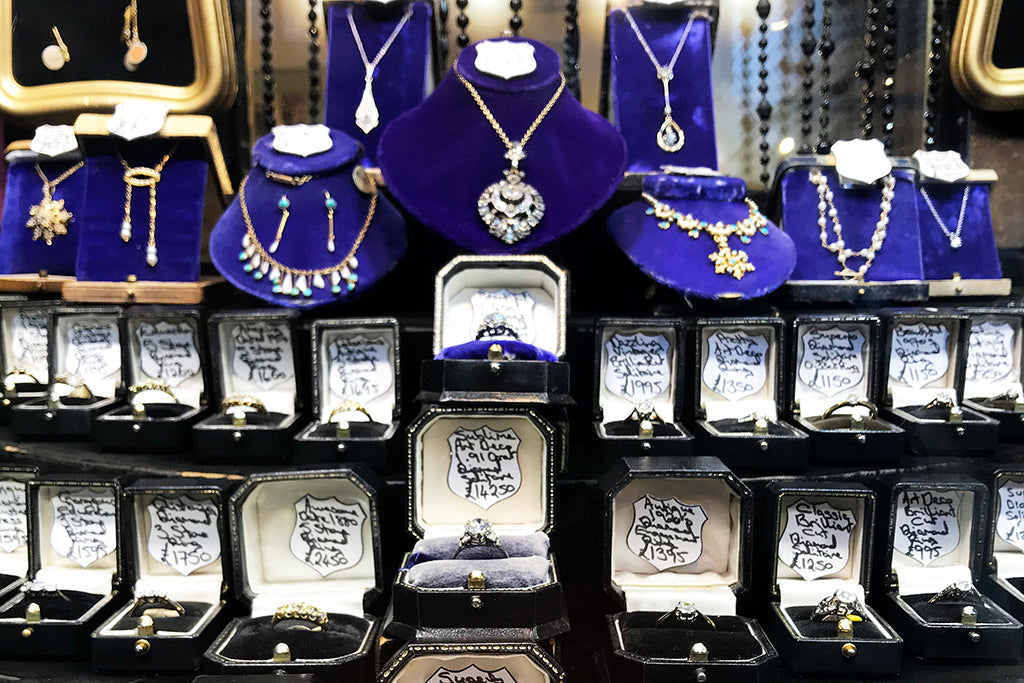
My Girlfriend Wants a Vintage Engagement Ring. Help!
While most women are hard-wired to be attracted to all things sparkly, engagement rings are not something that men pay much attention to – not, that is, until they are faced with the Herculean task of choosing one for their partner.
If you have no clue where to start, you’re not alone. Rare is the man who can talk eloquently about ring designs, tell the difference between diamond cuts or confidently state which precious metal is better (and why). And that’s before you’ve contemplated the most important question of all: what ring will she like?
My first bit of advice is: don’t overthink it. If you know your partner wants a vintage engagement ring, you’ve narrowed down the possibilities considerably. Yes, there are the different eras of jewellery design to consider, each of which has its distinct traits and design flourishes, but with this important decision made, you can start to build an idea of what you are looking for. To help you with your quest, I have answered some of the most commonly asked questions that crop up time and time again when men get in contact with us at The Vintage Ring Company.
How much should I spend on a vintage engagement ring?

This is the million-dollar question and there isn’t a definitive answer. In the 1930s, a shrewd marketer at De Beers declared that men should spend 3 months’ salary on an engagement ring. If you have this kind of money saved, or can comfortably put it aside each month, all well and good, but otherwise banish this outdated rule from your mind and instead set your budget at what you can afford. As you can see on our website, you can buy a beautiful vintage engagement ring for under £2,000, so don’t despair, even if your budget isn’t huge.
This question brings us neatly on to another that might be playing on your mind as you contemplate your budget:
Why do engagement rings cost so much money?

An engagement ring falls into the fine jewellery category, which means it is made from a precious metal and usually set with diamonds or gemstones. Gold and platinum are considerably more expensive than silver because both are rare by comparison. They are also extremely hard-wearing – perfect for a jewel that will be worn every day – and won’t tarnish like silver.
Diamonds, sapphires, rubies and emeralds, the four most popular gems for an engagement ring, formed millions, perhaps even billions of years ago, deep within the earth’s mantle. If that doesn’t blow your mind, and at least justify some of the expense, then let’s look at them from a more practical perspective. Diamonds are the hardest material on earth – another tick in the durable box – and sapphires and rubies are also robust enough to wear every day without damaging them (emeralds are more fragile, but you can still get away with them if you take good care of your ring).
The good news about buying a vintage engagement ring is that, as a pre-worn and pre-loved jewel, you are not paying a premium for buying new. In fact, a second-hand diamond ring will cost at least 50% less, often more, than the equivalent new, which means you can save money opting for vintage (or buy something bigger and better, a sentiment she will definitely approve of).
While we’re discussing value, this question rears its head often too:
Why are diamonds so expensive?

Pretty much everyone is aware of the value placed upon diamonds, but not what affects it. For example, a 1 carat diamond is more than double the price of an identical diamond of 0.50 carats. Why? You have to go right back to the source to answer that question. When diamonds are mined, they emerge from the earth as frosted, misshapen crystals that must be cut and polished before they resemble the diamonds you see in engagement rings. The larger the nuggets, the less likelihood there is of finding them, which is the main reason for the exponential rise in the value of a diamond.
However, a diamond’s value is not just determined by its size or carat weight, to use the official term. There are many other factors that affect the price of a diamond: its clarity (the number of imperfections the diamond contains, on the surface and internally); its colour (this is somewhat misleading because the closer to colourless a diamond is, the higher its value); and how well it has been cut. So, while it is likely that the bigger the diamond, the more it will cost, it is not true in all cases.
A white diamond or coloured gemstone?

This question requires you to channel your inner Luther. Have a rummage in her jewellery box, pay attention to what she is wearing and, most important of all, ask her friends.
You might want to use her wardrobe as a guide too. I love emeralds; my sister prefers diamonds. It’s no coincidence that she dresses more classically than me. If your other half likes to make big, bold statements, she is more likely to be drawn to the spectrum of coloured gemstones.
What type of precious metal is best?

If you were planning on buying a new engagement ring then this would be more difficult to answer – I could debate the pros and cons of gold vs. platinum and perhaps persuade you either way. With a vintage engagement ring, though, the decision is often out of your hands. If it gets your seal of approval, it is within your budget and you know your partner will love it, I wouldn't dwell too much on the metal.
Most antique rings (rings that pre-date the 1930s) are crafted mainly in yellow gold, with the setting – the bit that holds the stones – in white gold, platinum or silver.
Advances in technology enabled rings to be made entirely in platinum – the strongest precious metal – in the early 20th century, but gold remained by far the most popular choice for an engagement ring right up until the end of the 20th century. So, if you or your partner have your heart set on platinum or white gold, consider a vintage style ring instead. Jewellers continue to be inspired by classic designs and ring styles from the past and you are much more likely to find an all-platinum or white gold ring made in the vintage style from the 1990s onwards.
How do I find out her ring size?

Alongside “how much should I spend?”, this is the question that perplexes men most – and with good reason. If you are determined to keep the proposal a surprise, there are various ways of making an accurate estimate of her ring size, which we have covered in detail in our previous blog post, How do I find out her ring size without her knowing.
Absolutely the best thing you can do is wait until after you have proposed before you get her engagement ring made bigger or smaller. It is not recommended to get a ring resized more than once, and if you made the tiniest mistake in your calculations, you risk weakening the band if a goldsmith has to make further adjustments.


